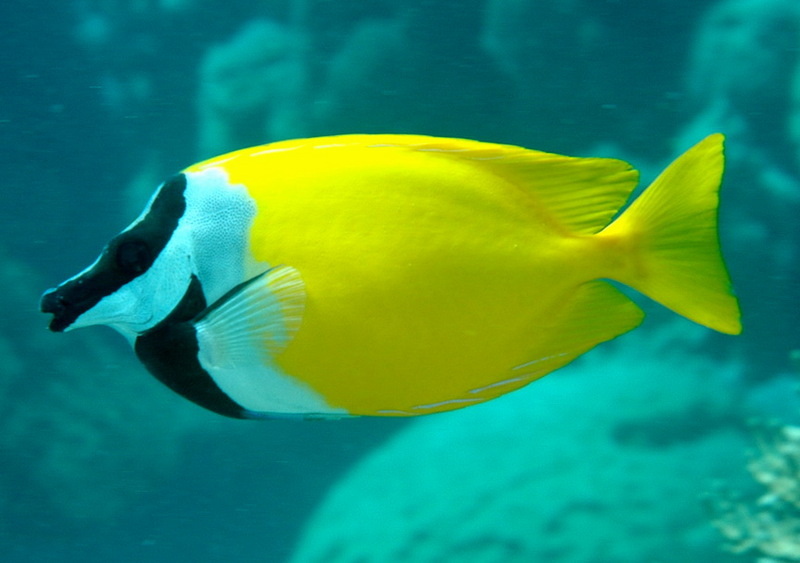|
| Query: Foxface rabbitfish | Result: 1st of 6 | |
Foxface Rabbitfish (Siganus vulpinus) - Wiki
| Subject: | Foxface Rabbitfish (Siganus vulpinus) - Wiki
| |

| Resolution: 864x608
File Size: 153828 Bytes
Date: 2005:02:16 15:02:07
Camera: NIKON D70s (NIKON CORPORATION)
F number: f/4.4
Exposure: 10/1000 sec
Focal Length: 700/10
Upload Date: 2007:08:11 11:11:32
|
Foxface rabbitfish
From Wikipedia, the free encyclopedia
[Photo] Siganus vulpinus at Great Barrier Reef, Cairns, Australia. Date February 16, 2005. Author: Leonard Low from Australia http://flickr.com/people/leonardlow/
The foxface rabbitfish (Siganus vulpinus), also known as the foxface or foxface Lo (as it is sometimes classified in the genus Lo) is a popular saltwater aquarium fish. It is of the family Siganidae.
Appearance
The foxface is a bright yellow, medium-sized fish, usually attaining an average size of 9 inches in length. The head and front portion of its body is striped dark brown (or black) and white. They retain this bright coloring throughout the day, and during the night (or when stressed), like many other fishes, they have the ability to change into a dark brown color. This is most likely used as a camouflage against predators, and upon waking, their bright colors almost immediately return.
They have a long snout-like mouth that is used for feeding on algae and other vegetation, with the snout being particularly handy for reaching into crevices. Caution should be used with this fish. All of the dorsal, pelvic and anal fins have venomous spines. A wound from any of them can be, at the least, very painful. To prevent injury when working in an aquarium with a foxface, it is a good idea to wear thick rubber gloves or somehow isolate it to one side of the aquarium temporarily. Despite the danger of the venomous fins, the foxface is generally timid and will usually retreat behind some rocks when approached or you stick your arm in an aquarium. Most foxface-related injuries occur when people attempt to handle the foxface without wearing gloves or stick their hand in the aquarium while feeding.
Foods
The foxface is omnivorous but enjoys algae and other marine plant life. From time-to-time, if hungry, it may nip at corals (usually zooanthids and button polyps). Though not an obligate herbivore, the Foxface does require algae in its diet. In captivity it can usually be coaxed into eating a combination of mysis shrimp, sheets of dried seaweed and marine flake food containing algae. The foxface is popular with aquarists due to its appetite for feather caulerpa, a species of macroalgae that commonly overtakes the rockwork in home aquariums. The foxface is highly skilled at removing this algae and will generally clear an aquarium of it within a matter of days.
Distribution and habitats
The foxface lives throughout the western Pacific, often inhabiting coral reefs.
http://en.wikipedia.org/wiki/Foxface_rabbitfish
| The text in this page is based on the copyrighted Wikipedia article shown in above URL. It is used under the GNU Free Documentation License. You may redistribute it, verbatim or modified, providing that you comply with the terms of the GFDL. |
|
Comments |
|---|
| | Guest |
|
| Leave a message here,(")))'.,, |
| | Guest |
|
| Leave a message here'zgyJzd<'">sMFcoM |
| | Guest |
|
| Leave a message here,)'..,."() |
| | Guest |
|
| Leave a message here'vBABEH<'">DVrErQ |
^o^
Animal Pictures Archive for smart phones
^o^
|
|
|

